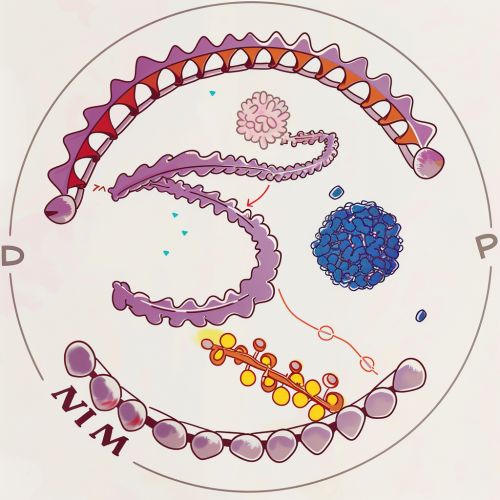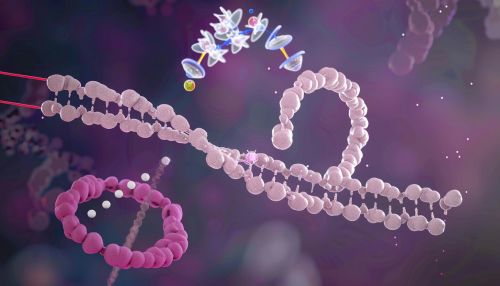Central dogma of molecular biology
Central Dogma of Molecular Biology
The central dogma of molecular biology is a framework for understanding the flow of genetic information within a biological system. It was first articulated by Francis Crick in 1958 and has since become a fundamental concept in molecular biology. The central dogma describes the process by which the information in genes flows into proteins: DNA → RNA → Protein.


Historical Context
The concept of the central dogma was introduced during a time when the molecular mechanisms of genetic information transfer were just beginning to be understood. The discovery of the double helix structure of DNA by James Watson and Francis Crick in 1953 laid the groundwork for understanding how genetic information is stored and replicated. Crick's formulation of the central dogma provided a theoretical framework that guided subsequent research in molecular biology.
DNA Replication
DNA replication is the process by which a double-stranded DNA molecule is copied to produce two identical DNA molecules. This process is essential for cell division and is the first step in the central dogma. DNA replication involves several key enzymes, including DNA polymerase, helicase, and primase. These enzymes work together to unwind the DNA double helix, synthesize a complementary strand, and ensure the accuracy of the replication process.
Transcription
Transcription is the process by which the information in a DNA sequence is copied into a complementary RNA sequence. This step is crucial for the transfer of genetic information from the stable storage form of DNA to the more versatile RNA. Transcription is carried out by the enzyme RNA polymerase, which binds to a specific region of the DNA called the promoter. The RNA polymerase then synthesizes a single-stranded RNA molecule that is complementary to the DNA template strand.
Types of RNA
There are several types of RNA involved in the central dogma, each with a specific role:
- mRNA: Carries the genetic information from DNA to the ribosome, where it is translated into a protein.
- tRNA: Brings amino acids to the ribosome during protein synthesis.
- rRNA: Forms the core of the ribosome's structure and catalyzes protein synthesis.
RNA Processing
In eukaryotic cells, the primary RNA transcript (pre-mRNA) undergoes several processing steps before it becomes a mature mRNA molecule. These steps include:
- 5' capping: Addition of a modified guanine nucleotide to the 5' end of the RNA.
- Polyadenylation: Addition of a poly-A tail to the 3' end of the RNA.
- Splicing: Removal of non-coding sequences (introns) and joining of coding sequences (exons).
These modifications are essential for the stability and functionality of the mRNA.
Translation
Translation is the process by which the information in an mRNA molecule is used to synthesize a protein. This process occurs in the ribosome, a complex molecular machine composed of rRNA and proteins. Translation involves three main stages:
- Initiation: The small ribosomal subunit binds to the mRNA, and the initiator tRNA binds to the start codon.
- Elongation: The ribosome moves along the mRNA, and tRNAs bring amino acids to the ribosome, where they are added to the growing polypeptide chain.
- Termination: The ribosome reaches a stop codon, and the newly synthesized protein is released.
Post-Translational Modifications
After translation, proteins often undergo various post-translational modifications that are crucial for their function. These modifications can include:
- Phosphorylation: Addition of phosphate groups.
- Glycosylation: Addition of carbohydrate groups.
- Ubiquitination: Addition of ubiquitin molecules, often marking the protein for degradation.
These modifications can affect the protein's activity, stability, and interactions with other molecules.
Exceptions to the Central Dogma
While the central dogma provides a general framework, there are several exceptions and additional layers of complexity. For example:
- Reverse transcription: Some viruses, such as retroviruses, can convert RNA back into DNA using the enzyme reverse transcriptase.
- RNA editing: Some organisms can alter the nucleotide sequence of an RNA molecule after it has been transcribed.
- Prions: Infectious proteins that can propagate by inducing misfolding of normal proteins, bypassing the need for nucleic acids.
Implications and Applications
The central dogma has profound implications for various fields, including genetics, biotechnology, and medicine. Understanding the flow of genetic information has enabled the development of techniques such as PCR, gene therapy, and CRISPR-Cas9 gene editing. These technologies have revolutionized research and treatment strategies for numerous genetic disorders and diseases.
